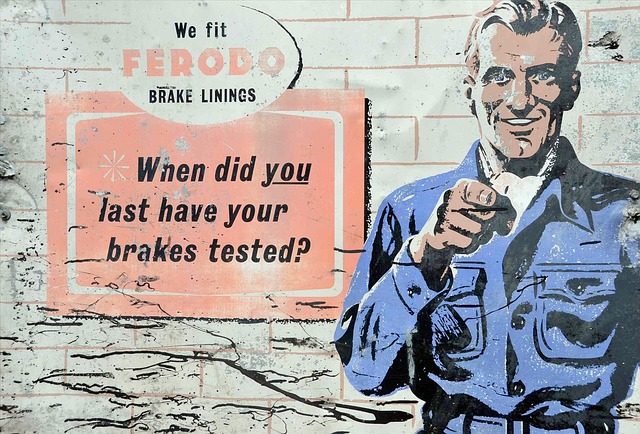Understanding Emissions and Safety Standards Across Markets
Emissions and vehicle safety standards vary significantly between regions, yet they share common goals: reduce pollution, improve road safety, and ensure consistent vehicle performance. This article explains how different markets approach inspections and what vehicle owners should know to stay compliant and safe.

Inspections for emissions and safety are critical checkpoints that help maintain clean air and protect road users. Different countries and regions set varying thresholds, testing methods, and enforcement practices, but the underlying principles—measuring pollutants, ensuring functional safety systems, and verifying roadworthiness—are similar. Owners, buyers, and fleet managers should understand how assessments evaluate brakes, suspension, tires, and emissions-control components so they can prepare vehicles appropriately for inspection and ongoing maintenance.
Emissions: What regulators check
Emissions testing focuses on pollutants produced by combustion engines and, increasingly, on overall vehicle evaporative systems and onboard diagnostics. Standards typically measure carbon monoxide (CO), hydrocarbons (HC), nitrogen oxides (NOx), and particulate matter (PM) using tailpipe sampling, onboard diagnostic (OBD) checks, or periodic inspection of emission-control devices like catalytic converters and diesel particulate filters. Requirements differ by market: some jurisdictions rely primarily on OBD fault codes, while others still require live tailpipe tests. Retaining a properly functioning exhaust system, avoiding check-engine lights, and addressing fuel-system or catalytic-converter faults will help vehicles meet most emissions protocols.
Safety: Core elements of vehicle safety assessments
Safety inspections evaluate systems that directly affect the vehicle’s ability to operate safely. Inspectors commonly assess brakes for wear and effectiveness, suspension components for damage and alignment, steering for play and responsiveness, lighting for visibility, and structural integrity for corrosion or damage. Seat belts and airbags may be checked for presence and proper function where regulations require, and tires are examined for tread depth, damage, and correct inflation. Markets prioritize different elements depending on local risk profiles; for example, regions with extreme winter weather may place additional emphasis on lighting and tire condition.
Assessment approaches across markets
Assessment protocols vary from simple visual checks to comprehensive, instrumented testing. Some markets use a pass/fail model based on a statutory checklist; others apply a scoring system that identifies defects by severity, requiring immediate repair for critical issues and allowing remediation timelines for minor faults. Commercial vehicle regimes often have stricter, more frequent inspections than private vehicles. Understanding whether your area uses OBD interrogation, tailpipe analyzers, roller-brake testers, or full roadworthiness inspections can help owners select appropriate pre-inspection diagnostics and repairs. Compliance also depends on proper documentation, such as emissions certificates or inspection stickers, where required.
Checklist: Pre-inspection items to prepare
Before presenting a vehicle for inspection, use a practical checklist that covers common failure points. Verify that all exterior lights function, replace worn windshield wipers, confirm tire tread depth and pressures, inspect brakes for unusual noises or reduced feel, and check for dashboard warning lights. Ensure the exhaust system is intact and free of leaks and that battery terminals are clean and secure. For prepurchase inspections, expand the checklist to include a thorough look for rust, fluid leaks, and evidence of past crash repairs. Keeping routine records of maintenance and recent repairs can make assessments smoother and provide context if minor issues are discovered.
Diagnostics: Tools and common fault codes
Modern diagnostics rely heavily on OBD systems that store fault codes pointing to malfunctions in emissions and driveability systems. Basic scan tools can read generic and manufacturer-specific codes, revealing issues such as misfires, oxygen sensor degradation, or evaporative system leaks that will affect emissions testing. More advanced diagnostics include smoke tests for vacuum leaks, compression checks for engine health, and ABS or airbag module scans for safety-related faults. Professional garages often combine electronic diagnostics with dynamic tests—brake rollers, suspension testers, and alignment rigs—to confirm functional performance rather than relying solely on visual inspection.
Maintenance: Ongoing care to pass inspections
Routine maintenance reduces the likelihood of inspection failures and extends vehicle lifespan. Regular oil and filter changes, timely replacement of worn brake pads and tires, corrosion prevention for underbody components, and periodic checks of belts, hoses, and battery health all contribute to compliance. For emissions control, maintaining the fuel and ignition systems, replacing deteriorated sensors, and addressing early OBD warnings prevents failures during testing. Maintenance also includes record-keeping: receipts and service logs support the history of care and can be useful during prepurchase assessments or when contesting inspection findings.
Understanding how different markets approach emissions and safety inspections helps owners and technicians prepare vehicles appropriately. While methods and thresholds vary, focusing on clean exhaust systems, functional safety components, and regular diagnostics will improve the odds of passing inspections and keep vehicles safer and more reliable on the road.






